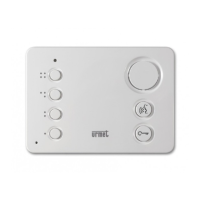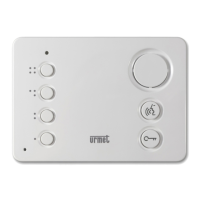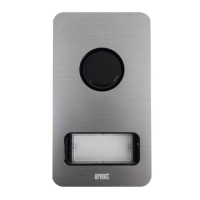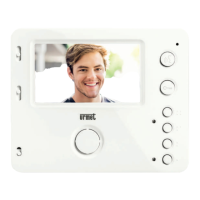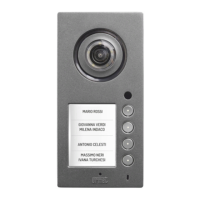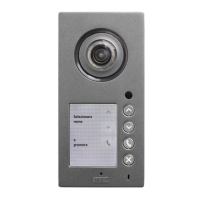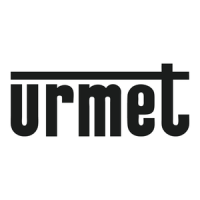
Do you have a question about the urmet domus Miwi 1132/520 and is the answer not in the manual?
| Type | Video Intercom |
|---|---|
| Model | Miwi 1132/520 |
| Wiring | 2-wire |
| Resolution | 480 x 272 pixels |
| Camera | Yes |
| Power Consumption | Max 5W |
| Audio | Full-duplex |
| Installation | Surface mounted |
| Night Vision | Yes, with IR LEDs |
Guidance on electrical connections for the system.
Diagram for installing with one entrance panel.
Diagram for installing with multiple main entrance panels.
Diagram for Master/Slave architecture installations.
Diagram for video doorphone installation with one panel.
Diagram for video doorphone installation with multiple panels.
Core features of the 1052/10..10D call module.
Technical specifications for the 1052/10..10D call module.
Core features of the 1052/11..11D call module.
Technical specifications for the 1052/11..11D call module.
Core features of the 1052/15..15D call module.
Technical specifications for the 1052/15..15D call module.
Core features of the 1052/16..16D call module.
Technical specifications for the 1052/16..16D call module.
Using Dallas keys for door opening.
Default settings and structure of the programming menu.
Main setup options including password and module ID.
Changing the identification ID of the call module.
Enabling/disabling automatic MASTER power supply selection.
Resetting the power supply.
Pre-adjustment and potentiometer functions for call modules.
Pre-adjustment and potentiometer functions for call module 1052/13.
Table listing error codes and their explanations.
Step-by-step guide for activating the MASTER system.
Step-by-step guide for activating the MASTER system.
Activation steps for MASTER/SLAVE systems.
Activation steps for MASTER/SLAVE systems.
Instructions for operating and programming video modules.
Method to enter programming mode without password.
Default configuration for user codes.
How to call users within the system.
Using general codes to open doors.
Using individual codes to open doors.
Overview of the programming mode.
Using general codes to activate NC-C-NO relay.
Using individual codes to activate NC-C-NO relay.
Default settings and structure of the programming menu.
Steps to enter the programming mode.
Structure and navigation of the programming menu.
Main setup options including password and module ID.
Managing logical user and opening codes.
Configuration for Master/Slave power supply setup.
How to navigate and use the programming mode.
Process to edit and change the system password.
Changing the identification ID of the call module.
Resetting EEPROM memory and programming steps.
Programming logical user codes for house phones.
Reprogramming logical user codes.
Programming individual opening codes for users.
Programming general opening codes for keyboards.
Assigning Dallas keys to user codes.
Assigning Dallas keys to user codes.
Changing the ID number of the MASTER power supply.
Programming logical user codes for the main channel.
Re-mapping logical user codes for the main channel.
Setting the house phone's physical address via jumpers.
Setting the house phone's physical address via jumpers.
Setting the house phone's physical address via jumpers.
Dipswitch settings for physical address and video line termination.
Technical specifications for the bracket.
Technical specifications for the Master power supply.
Technical specifications for the Master/Slave power supply.
Technical specifications for the additional power supply.
Technical specifications for the video power supply.
Procedure for programming the video distributor.
Technical specifications for the relay switch.
Programming physical addresses using dipswitches.
Technical specifications for the digitiser.
Setting the unique ID for each digitiser.
Associating buttons with door phones and setting power unit.
Configuration menu for the switchboard station.
Assigning names or descriptions to entrance panels.
Setting and managing the access password.
Managing the user repertory.
Procedures for editing the repertory.
Steps to add a new user to the repertory.
Modifying existing user entries in the repertory.
Adjusting switchboard station parameters like display contrast and volume.
Reporting and interpreting system errors.
Table showing dip-switch and jumper settings for video brackets.
Table of dip-switch and jumper settings for digitisers.






